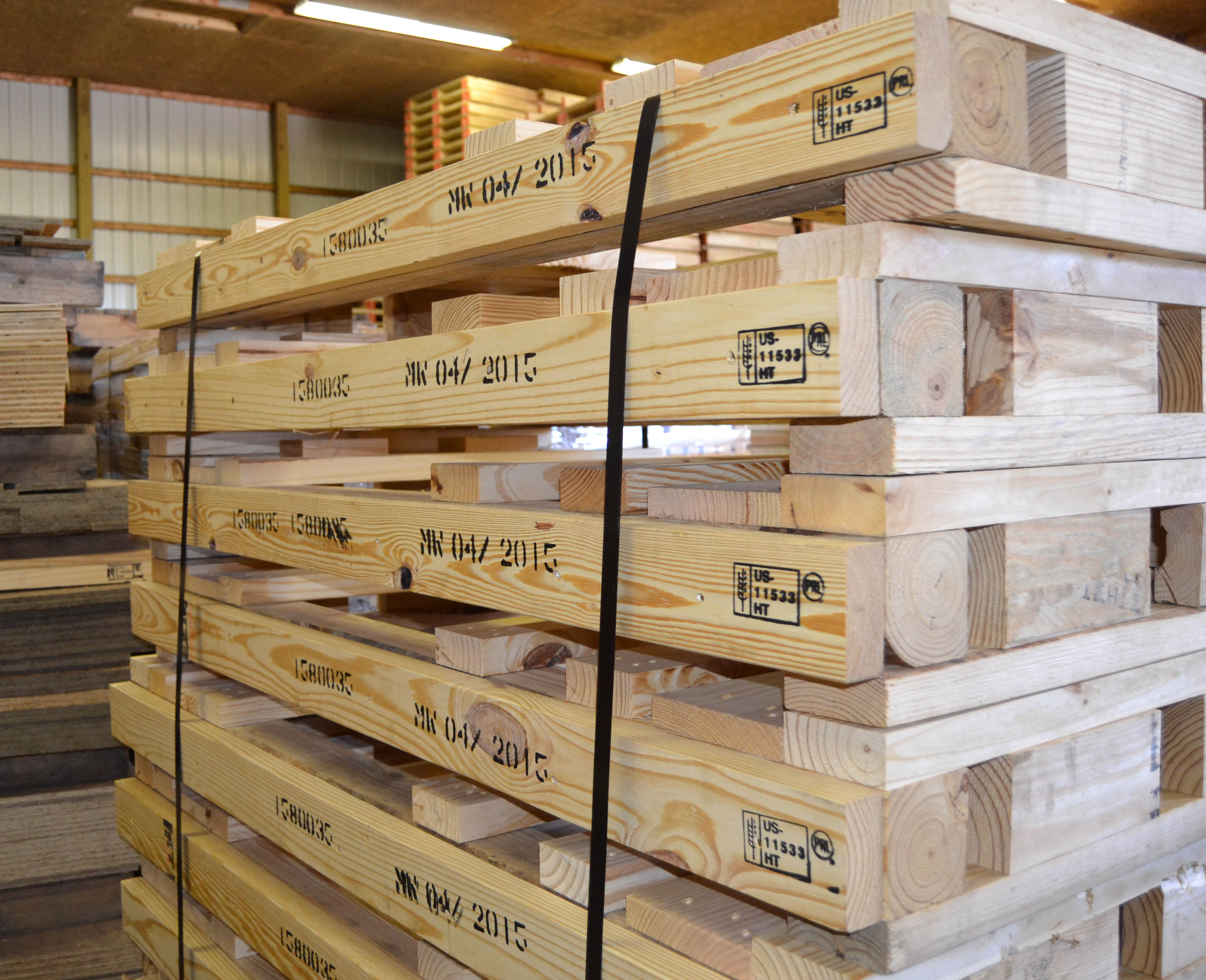Recently a Wisconsin pallet shop site manager was fined $25,000, put on 2 years probation, and made to pay $18,000 in restitution to customers for fraudulently using a heat treatment stamp. To some people there may be grey areas in the use of the stamp, especially when considering used pallets. However, a review of the regulations should remove any doubt.
Heat treatment is required to meet ISPM15 requirements for the prevention of live wood insect migration in solid wood packaging materials. While treatment with methyl bromide is approved under the regulations, the preferred method is to heat the wood until the core temperature is 56oC and held for 30 minutes. ISPM 15 regulations are governed by the USDA APHIS (Animal and Plant Health Inspection Services) Department. APHIS has put the American Lumber Standard Committee (ALSC) to oversee the heat treatment certification program. Various third party inspection services are accredited by ALSC and are hired by heat treaters to certify their processes and the use of the ISPM15 stamp.
For softwood pallet designs, the pallet components are kiln dried to reduce moisture and maintain dimensional stability before assembly and therefore meet the heat treatment requirements from the kiln drying process. Hardwood pallets are typically assembled from non-dried lumber and heat treatment is performed after assembly.
With new pallet manufacture the use of the stamp is fairly straight forward but there are several points to consider.
1. The stamp can only be used by a manufacturer under a contract with an accredited inspection service.
2. The stamp can only be purchased through the contracted inspection services.
3. The stamp when applied must be legible and on at least two opposite sides of the pallet.
There are several complications to the use of the heat treat stamp with used pallets. According to ISPM 15, when a pallet is repaired, the pallet must be re-heat treated, the original stamp obliterated, and a new stamp applied.
But – what happens if a previously heat treated pallet is repaired, but not sold as a heat treated pallet? Is it still a heat treated pallet? If the repaired pallet does not have the stamp obliterated, an end-user could (and often does) consider it a heat treated pallet and their shipment could be refused on entry into the receiving country. Recyclers with a heat treater and under an inspection contract are required to obliterate all heat treat stamps on incoming pallets. Any heat treated pallet sold by the recycler must be re-heat treated and marked with their stamp.
Unfortunately, some recyclers that do not have heat treating capabilities do not obliterate the stamps, make repairs, and then sell the pallet as a non-heated pallet; but it is still marked. Some have gone so far as to collect non-repaired heat treated pallets and resell them as heat treated. This is a huge problem, in that it makes the stamp an ineffective control point. The ISPM 15 regulations were initially written as a paperless system relying solely on the stamp for adherence to the rules. Most exporters are now requiring documentation of the inspection services either a copy the annual certificate or the latest inspection report.
Understanding these issues and knowing out supply base is essential to ensure Millwood's brokered heat treated pallets meet the requirements. Check to make sure all stamps are obliterated and our supply partners have up to date inspections. Also, educate our customers that a load of heat treated pallets should have only one ID number throughout the load. Mixed ID numbers is a red flag that the regulations are not being followed.






